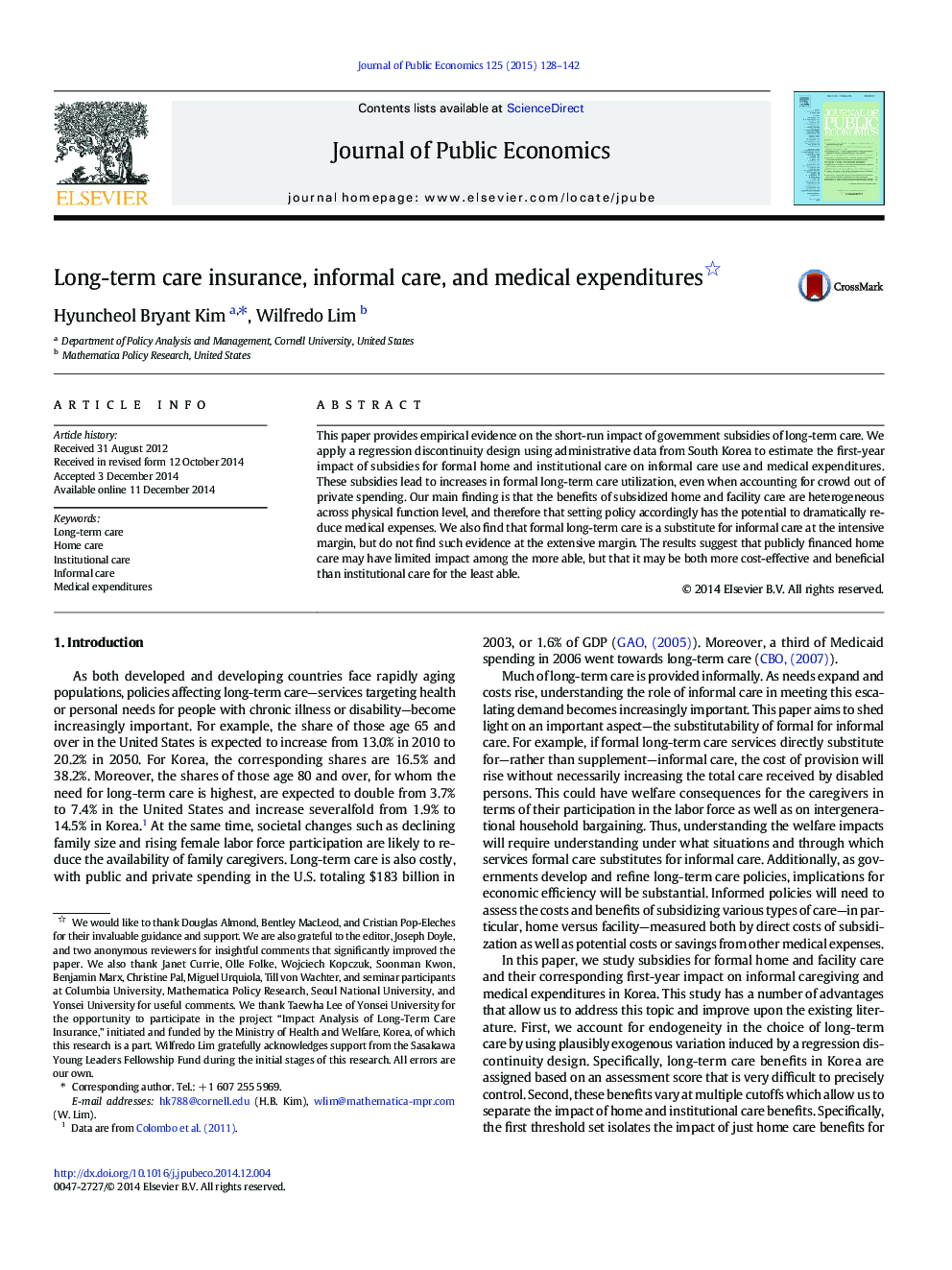| Article ID | Journal | Published Year | Pages | File Type |
|---|---|---|---|---|
| 969061 | Journal of Public Economics | 2015 | 15 Pages |
•Evidence on short-run impact of government subsidies of long-term care.•Benefits of subsidized home and facility care vary with physical function.•Home care more cost-effective and beneficial than institutional care for least able.
This paper provides empirical evidence on the short-run impact of government subsidies of long-term care. We apply a regression discontinuity design using administrative data from South Korea to estimate the first-year impact of subsidies for formal home and institutional care on informal care use and medical expenditures. These subsidies lead to increases in formal long-term care utilization, even when accounting for crowd out of private spending. Our main finding is that the benefits of subsidized home and facility care are heterogeneous across physical function level, and therefore that setting policy accordingly has the potential to dramatically reduce medical expenses. We also find that formal long-term care is a substitute for informal care at the intensive margin, but do not find such evidence at the extensive margin. The results suggest that publicly financed home care may have limited impact among the more able, but that it may be both more cost-effective and beneficial than institutional care for the least able.
